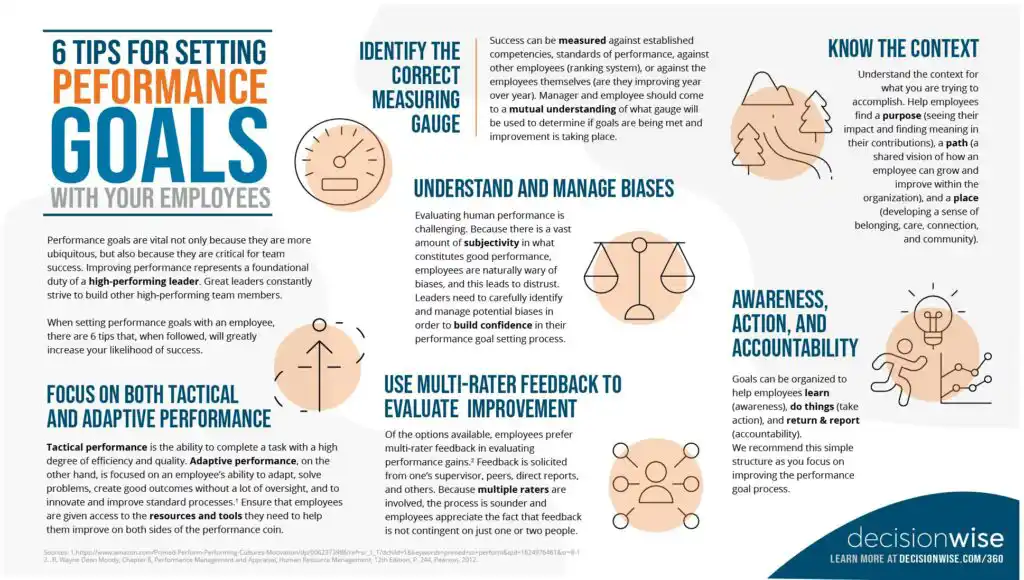Performance goals are vital not only because they are more ubiquitous, but also because they are critical for team success. Improving performance represents a foundational duty of a high-performing leader. Great leaders constantly strive to build other high-performing team members. When setting performance goals with an employee, there are 6 tips that, when followed, will greatly increase your likelihood of success.
Focus on Both Tactical and Adaptive Performance
Tactical performance is the ability to complete a task with a high degree of efficiency and quality. Adaptive performance, on the other hand, is focused on an employee’s ability to adapt, solve problems, create good outcomes without a lot of oversight, and to innovate and improve standard processes.1 Ensure that employees are given access to the resources and tools they need to help them improve on both sides of the performance coin.
Identify the Correct Measuring Gauge
Success can be measured against established competencies, standards of performance, against other employees (ranking system), or against the employees themselves (are they improving year over year). Manager and employee should come to a mutual understanding of what gauge will be used to determine if goals are being met and improvement is taking place.
Understand and Manage Biases
Evaluating human performance is challenging. Because there is a vast amount of subjectivity in what constitutes good performance, employees are naturally wary of biases, and this leads to distrust. Leaders need to carefully identify and manage potential biases in order to build confidence in their performance goal setting process.
Use Multi-Rater Feedback to Evaluate Whether Performance is Improving
Of the options available, employees prefer multi-rater feedback in evaluating performance gains. Feedback is solicited from one’s supervisor, peers, direct reports, and others. Because multiple raters are involved, the process is sounder and employees appreciate the fact that feedback is not contingent on just one or two people.
Know the Context
Understand the context for what you are trying to accomplish. Help employees find a purpose (seeing their impact and finding meaning in their contributions), a path (a shared vision of how an employee can grow and improve within the organization), and a place (developing a sense of belonging, care, connection, and community).
Awareness, Action, and Accountability
Goals can be organized to help employees learn (awareness), do things (take action), and return & report (accountability). We recommend this simple structure as you focus on improving the performance goal process.






